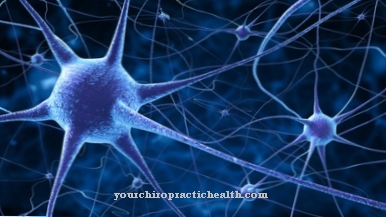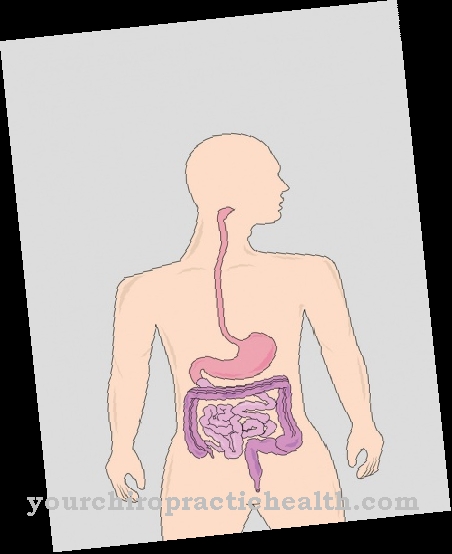The Stride length is a quantity that is used in gait analysis and sports. It is used for qualitative and quantitative measurement and assessment of walking and running.
What is the stride length?

The stride length describes the distance that is created between the two feet when walking and running. It is a measure of the degree of path gain that is achieved per step. There are various measurement methods for determining them.
In gait analysis, one basically observes the stride lengths of both legs in a side comparison. The distance between the toe of the rear foot and the heel of the front foot is used as a reference. There are averaged norm values, which are only used for orientation, as the individual differences depend on various factors and can be considerable.
Video-based computer programs can make analysis much easier today, but they are not available to everyone. For athletes who only want to determine the distance in a certain time, there is a simpler method for determining the stride length. You must first count the steps taken on a predetermined distance. Then only the distance has to be divided by the number of steps and the step length is fixed. This is usually given in centimeters.
Function & task
In gait analysis, the step length is an observation parameter that is used to recognize and assess gait deviations. Since the differences to the approximate norm only provide imprecise information, the side comparison is the decisive criterion for recognizing changes in the gait pattern. In the second step, this knowledge must be traced back to its manifest or functional cause in order to be able to plan and initiate a corresponding therapy.
Observing the stride length alone is not sufficient for this; other parameters must also be taken into account. It is important to establish the connection with the chronological sequence of the gait phases and to find out with the appropriate background knowledge why the gait change occurs and which structures are responsible for it. Changes in stride length are always visible in the swing leg phase, although they are often caused by the standing leg phase.
The sporty gait analysis, which is usually carried out by sport scientists and trainers using equipment, is used to optimize running technique and performance. The step length is not absolutely dependent on the body length, but rather on the individual leverage. People with legs that are relatively long compared to their torso take big strides and vice versa.
Adapting the stride length to these personal circumstances can be an effective means of improving the effectiveness of an athlete's running. If the pace remains the same, the step frequency also changes with the step length.
Recreational athletes who have determined their stride length can then use the reverse calculation method to determine their running distance. To do this, the steps must be counted during the sporting activity and multiplied by the step length. Nowadays, this work is done by digital devices such as step counters and activity trackers, which automatically determine the running distance after entering the calculated data. However, this type of calculation only works if you run approximately the same speed as during the test. A faster speed is always associated with an increase in the stride length and a slower one with a decrease.
You can find your medication here
➔ Medicines for balance disorders and dizzinessIllnesses & ailments
Pain or overstress caused by illnesses and injuries to the legs can result in a shortening of the stride length, which is often accompanied by a reduction in time. If this phenomenon occurs unilaterally, the gait rhythm changes. Muscle injuries cause pain that is increased with use or stretching of the muscles. If the muscles that stabilize the leg in the standing leg phase are affected, this is broken off due to pain. The other leg is set forward quickly and briefly, the stride length is more or less shortened depending on the intensity of the complaints. This phenomenon also occurs with injuries to the ligaments in the knee and ankle joints, especially if they are stretched during movement.
A shortening of the stride length can often be observed in osteoarthritis. In these diseases, however, the change occurs before the conscious pain threshold is reached. The receptors that are responsible for reporting damage (nociceptors) send increased impulses to the spinal cord when a tissue is threatened with damage due to excessive stress and initiate the interruption of movement before damage or pain can occur. This is the case with osteoarthritis in the hip and knee joint when parts of the bone that are no longer covered with articular cartilage are excessively stressed by the pressure in the standing leg phase. These gait changes develop slowly, unlike those caused by acute injury and pain.
The swing leg phase is shortened when the muscles that perform the movements are damaged or weakened, for example due to paralysis of the foot lifters or the hip flexors.
A typical neurological disorder that results in a shortened stride length on both sides is Parkinson's. Centers in the central nervous system, which play an important role in the drive and control of movement, no longer function optimally with this disorder. This is expressed in the gait pattern with small, tripping steps.
All diseases of the central nervous system that cause atactic disorders can significantly affect the gait pattern. Such disorders (ataxia) manifest themselves in the fact that the movement coordination or the stability control or both are impaired. If the legs are affected, the result is an unsteady gait pattern with short, wide-legged steps.
























.jpg)



